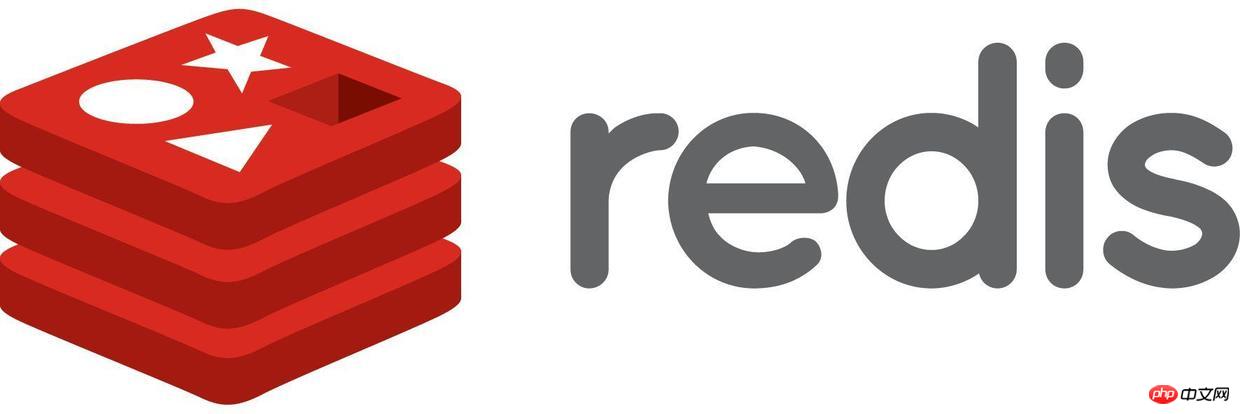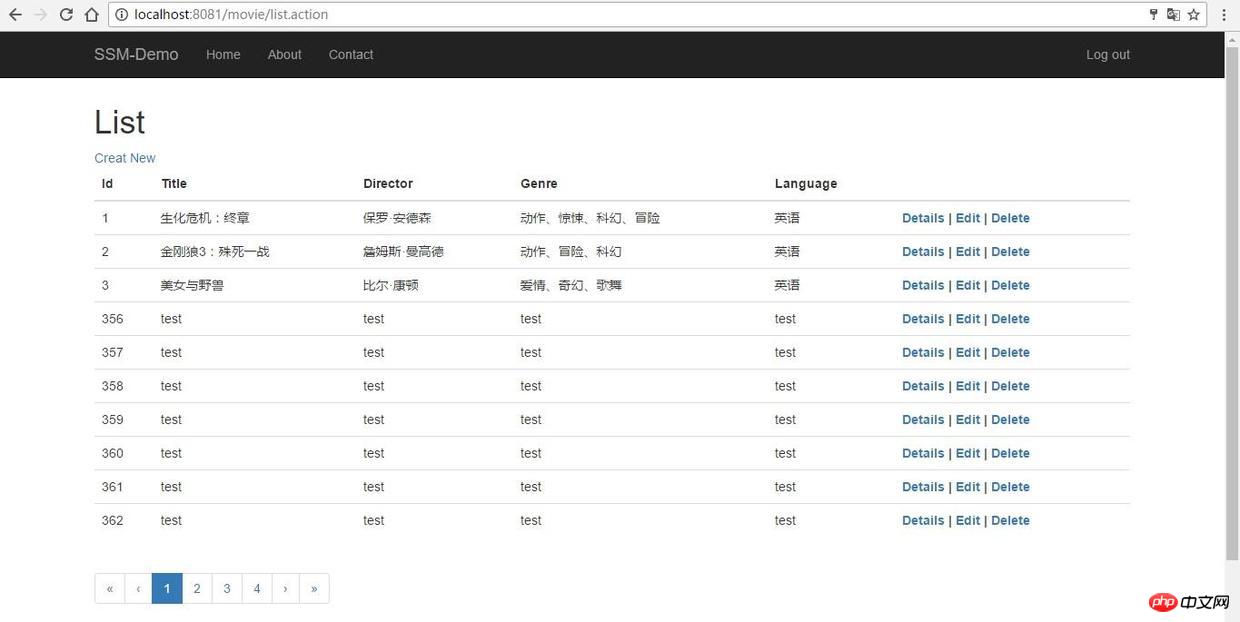Rumah >Java >javaTutorial >Java中关于SSM之整合Redis的详解
Java中关于SSM之整合Redis的详解
- 黄舟asal
- 2017-09-30 10:31:553693semak imbas

Redis安装与使用
第一步当然是安装Redis,这里以Windows上的安装为例。
首先下载Redis,可以选择msi或zip包安装方式
zip方式需打开cmd窗口,在解压后的目录下运行
redis-server redis.windows.conf启动Redis采用msi方式安装后Redis默认启动,不需要进行任何配置
可以在redis.windows.conf文件中修改Redis端口号、密码等配置,修改完成后使用
redis-server redis.windows.conf命令重新启动在Redis安装目录下执行
redis-cli -h 127.0.0.1 -p 6379 -a 密码打开Redis操作界面如果报错
(error) ERR operation not permitted,使用auth 密码进行验证
SSM整合Redis
这里直接在上一篇SSM之框架整合的基础上进行Redis整合,这里需要注意,存入Redis的pojo类必须实现Serializable接口。
配置pom.xml引入Redis依赖
<!--redis--><dependency>
<groupId>org.springframework.data</groupId>
<artifactId>spring-data-redis</artifactId>
<version>1.6.1.RELEASE</version></dependency><dependency>
<groupId>redis.clients</groupId>
<artifactId>jedis</artifactId>
<version>2.7.3</version></dependency>redis.properties
redis.host=127.0.0.1 redis.port=6379 redis.password=redis redis.maxIdle=100 redis.maxWait=1000 redis.testOnBorrow=true redis.timeout=100000 defaultCacheExpireTime=3600
applicationContext-redis.xml
<?xml version="1.0" encoding="UTF-8"?><beans xmlns="http://www.springframework.org/schema/beans"
xmlns:xsi="http://www.w3.org/2001/XMLSchema-instance"
xmlns:mvc="http://www.springframework.org/schema/mvc"
xmlns:context="http://www.springframework.org/schema/context"
xmlns:aop="http://www.springframework.org/schema/aop"
xmlns:tx="http://www.springframework.org/schema/tx"
xsi:schemaLocation="http://www.springframework.org/schema/beans
http://www.springframework.org/schema/beans/spring-beans.xsd
http://www.springframework.org/schema/mvc
http://www.springframework.org/schema/mvc/spring-mvc.xsd
http://www.springframework.org/schema/context
http://www.springframework.org/schema/context/spring-context.xsd
http://www.springframework.org/schema/aop
http://www.springframework.org/schema/aop/spring-aop.xsd
http://www.springframework.org/schema/tx
http://www.springframework.org/schema/tx/spring-tx.xsd">
<!--引入Redis配置文件-->
<bean id="propertyConfigurer" class="org.springframework.beans.factory.config.PropertyPlaceholderConfigurer">
<property name="locations">
<list>
<value>classpath:redis.properties</value>
</list>
</property>
</bean>
<!-- jedis 连接池配置 -->
<bean id="poolConfig" class="redis.clients.jedis.JedisPoolConfig">
<property name="maxIdle" value="${redis.maxIdle}"/>
<property name="maxWaitMillis" value="${redis.maxWait}"/>
<property name="testOnBorrow" value="${redis.testOnBorrow}"/>
</bean>
<!-- redis连接工厂 -->
<bean id="connectionFactory" class="org.springframework.data.redis.connection.jedis.JedisConnectionFactory">
<property name="poolConfig" ref="poolConfig"/>
<property name="port" value="${redis.port}"/>
<property name="hostName" value="${redis.host}"/>
<property name="password" value="${redis.password}"/>
<property name="timeout" value="${redis.timeout}"></property>
</bean>
<bean id="redisTemplate" class="org.springframework.data.redis.core.RedisTemplate">
<property name="connectionFactory" ref="connectionFactory"/>
<property name="keySerializer">
<bean class="org.springframework.data.redis.serializer.StringRedisSerializer"/>
</property>
<property name="valueSerializer">
<bean class="org.springframework.data.redis.serializer.JdkSerializationRedisSerializer"/>
</property>
</bean>
<!-- 缓存拦截器配置 -->
<bean id="methodCacheInterceptor" class="com.zkh.interceptor.MethodCacheInterceptor">
<property name="redisUtil" ref="redisUtil"/>
<property name="defaultCacheExpireTime" value="${defaultCacheExpireTime}"/>
<!-- 禁用缓存的类名列表 -->
<property name="targetNamesList">
<list>
<value></value>
</list>
</property>
<!-- 禁用缓存的方法名列表 -->
<property name="methodNamesList">
<list>
<value></value>
</list>
</property>
</bean>
<bean id="redisUtil" class="com.zkh.util.RedisUtil">
<property name="redisTemplate" ref="redisTemplate"/>
</bean>
<!--配置切面拦截方法 -->
<aop:config proxy-target-class="true">
<aop:pointcut id="controllerMethodPointcut" expression="
execution(* com.zkh.service.impl.*.select*(..))"/>
<aop:advisor advice-ref="methodCacheInterceptor" pointcut-ref="controllerMethodPointcut"/>
</aop:config></beans>MethodCacheInterceptor.java
package com.zkh.interceptor;
import com.zkh.util.RedisUtil;
import org.aopalliance.intercept.MethodInterceptor;
import org.aopalliance.intercept.MethodInvocation;
import java.util.List;
/**
* Redis缓存过滤器
*/
public class MethodCacheInterceptor implements MethodInterceptor {
private RedisUtil redisUtil;
private List<String> targetNamesList; // 禁用缓存的类名列表
private List<String> methodNamesList; // 禁用缓存的方法列表
private String defaultCacheExpireTime; // 缓存默认的过期时间
@Override
public Object invoke(MethodInvocation invocation) throws Throwable {
Object value = null;
String targetName = invocation.getThis().getClass().getName();
String methodName = invocation.getMethod().getName();
if (!isAddCache(targetName, methodName)) {
// 跳过缓存返回结果
return invocation.proceed();
}
Object[] arguments = invocation.getArguments();
String key = getCacheKey(targetName, methodName, arguments);
try { // 判断是否有缓存
if (redisUtil.exists(key)) {
return redisUtil.get(key);
} // 写入缓存
value = invocation.proceed();
if (value != null) {
final String tkey = key;
final Object tvalue = value;
new Thread(new Runnable() {
@Override
public void run() {
redisUtil.set(tkey, tvalue, Long.parseLong(defaultCacheExpireTime));
}
}).start();
}
} catch (Exception e) {
e.printStackTrace();
if (value == null) {
return invocation.proceed();
}
} return value;
}
/**
* 是否加入缓存
*
* @return
*/
private boolean isAddCache(String targetName, String methodName) {
boolean flag = true;
if (targetNamesList.contains(targetName)
|| methodNamesList.contains(methodName) || targetName.contains("$$EnhancerBySpringCGLIB$$")) {
flag = false;
} return flag;
}
/**
* 创建缓存key
*
* @param targetName
* @param methodName
* @param arguments
*/
private String getCacheKey(String targetName, String methodName,
Object[] arguments) {
StringBuffer sbu = new StringBuffer();
sbu.append(targetName).append("_").append(methodName);
if ((arguments != null) && (arguments.length != 0)) {
for (int i = 0; i < arguments.length; i++) {
sbu.append("_").append(arguments[i]);
}
} return sbu.toString();
} public void setRedisUtil(RedisUtil redisUtil) {
this.redisUtil = redisUtil;
} public void setTargetNamesList(List<String> targetNamesList) {
this.targetNamesList = targetNamesList;
} public void setMethodNamesList(List<String> methodNamesList) {
this.methodNamesList = methodNamesList;
} public void setDefaultCacheExpireTime(String defaultCacheExpireTime) {
this.defaultCacheExpireTime = defaultCacheExpireTime;
}
}RedisUtil.java 工具类
package com.zkh.util;import org.apache.log4j.Logger;import org.springframework.data.redis.core.RedisTemplate;import org.springframework.data.redis.core.ValueOperations;import java.io.Serializable;import java.util.Set;import java.util.concurrent.TimeUnit;/** * Redis工具类 */public class RedisUtil { private RedisTemplate<Serializable, Object> redisTemplate; /** * 批量删除对应的value * * @param keys */
public void remove(final String... keys) { for (String key : keys) { remove(key);
}
} /** * 批量删除key * * @param pattern */
public void removePattern(final String pattern) {
Set<Serializable> keys = redisTemplate.keys(pattern); if (keys.size() > 0)
redisTemplate.delete(keys);
} /** * 删除对应的value * * @param key */
public void remove(final String key) { if (exists(key)) {
redisTemplate.delete(key);
}
} /** * 判断缓存中是否有对应的value * * @param key * @return */
public boolean exists(final String key) { return redisTemplate.hasKey(key);
} /** * 读取缓存 * * @param key * @return */
public Object get(final String key) {
Object result = null;
ValueOperations<Serializable, Object> operations = redisTemplate
.opsForValue();
result = operations.get(key); return result;
} /** * 写入缓存 * * @param key * @param value * @return */
public boolean set(final String key, Object value) { boolean result = false; try {
ValueOperations<Serializable, Object> operations = redisTemplate
.opsForValue();
operations.set(key, value);
result = true;
} catch (Exception e) {
e.printStackTrace();
} return result;
} /** * 写入缓存 * * @param key * @param value * @return */
public boolean set(final String key, Object value, Long expireTime) { boolean result = false; try {
ValueOperations<Serializable, Object> operations = redisTemplate
.opsForValue();
operations.set(key, value);
redisTemplate.expire(key, expireTime, TimeUnit.SECONDS);
result = true;
} catch (Exception e) {
e.printStackTrace();
} return result;
} public void setRedisTemplate(
RedisTemplate<Serializable, Object> redisTemplate) { this.redisTemplate = redisTemplate;
}
}效果展示

刚开始Redis中没有任何记录,接下来访问一下第一页记录

再查看缓存,记录已经存如Redis,并且第一次访问会从Mysql中读取数据


按F5刷新页面,从Tomcat控制台可以看到没有进行SQL查询,而是直接从Redis中读取缓存数据,减轻了数据库的负担


Atas ialah kandungan terperinci Java中关于SSM之整合Redis的详解. Untuk maklumat lanjut, sila ikut artikel berkaitan lain di laman web China PHP!
Kenyataan:
Kandungan artikel ini disumbangkan secara sukarela oleh netizen, dan hak cipta adalah milik pengarang asal. Laman web ini tidak memikul tanggungjawab undang-undang yang sepadan. Jika anda menemui sebarang kandungan yang disyaki plagiarisme atau pelanggaran, sila hubungi admin@php.cn
Artikel sebelumnya:Java如何利用反射查找使用指定注解的类详解Artikel seterusnya:Java并发之线程的使用以及基本概念
Artikel berkaitan
Lihat lagi- Bagaimana untuk Mengemas kini JLabel Secara Berterusan Menggunakan Pemasa Swing dan SwingWorker?
- Bagaimana untuk mengumpulkan Java 8 Objek Bersarang dengan Berbilang Kekunci Menggunakan Pengumpul?
- Mengapakah Operator Modulus Java Menghasilkan Keputusan Negatif untuk Nombor Negatif?
- Berikut ialah beberapa pilihan tajuk, mengekalkan format soalan: * Cara Mengintegrasikan Java dengan lancar ke dalam Python: Panduan Komprehensif untuk Memilih Pendekatan yang Tepat * Python Memanggil Java: Metho Yang Mana
- Bagaimana untuk Mengendalikan Ralat HTTP 415 dalam Permintaan POST Jersey?

